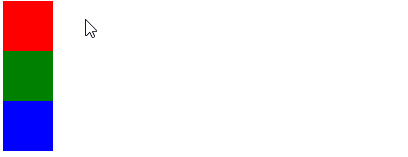0
The code below has almost the result I would like, however the effect only works in subsequent classes in the case of the example from class two to the three, the class two following the one may the one be within another div, so it does not work.
So the question is, how do one class change the effect of another independent of the order or what element they are?
.um:hover ~ .dois{
display: none;
}
.dois:hover ~ .tres{
display: none;
}
.tres:hover ~ .um{
display: none;
}
div {
height: 50px;
width: 50px;
}
.um {
background: red;
}
.dois {
background: green;
}
.tres {
background: blue;
}<div>
<div class="um"></div>
</div>
<div class="dois"></div>
<div class="tres"></div>
Making Hover in Um you can’t reach Two, not with CSS, with JS you can do. Unless you’re leaking the Hover on Father One, then you take Two, but I don’t think that’s what you want.
– hugocsl
No and that, I believe that I will have to implement in JS same.
– Rafael Sene
Yes in this situation only with JS, because the CSS does not go back and tb does not "leak the scope", like, the One Hover will not "leak" the father div and take the Two below. So just with JS itself, I’ll see if I give you an example
– hugocsl